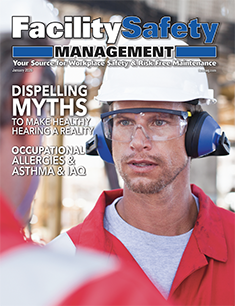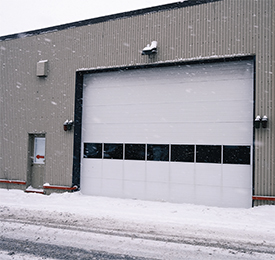January 2026
 |
Inside the January Issue |
Common Hazardous Material Containers
The improper handling of chemical waste can result in injuries
to employees, damage to the environment, and fines from regulatory
agencies. Hazardous waste containers must comply with
EPA regulations.
The container must be labeled "Hazardous Waste", dated on
the day that waste is first accumulated, and have the constituents
of the container spelled out in full, in English. At the
end of the workday or experiment, be sure that any funnel that
collects waste into a container is taken out of the container and
the container recapped.
To ensure proper management of these containers, follow
these guidelines:
All hazardous waste designated for disposal must be placed
in appropriate glass, metal, or chemically inert, non-reactive,
non-flexible plastic containers with tightly fitting screw caps.
Corrosives should not be placed in metal containers. Leaking, visibly damaged, or rusted containers are not acceptable. Used containers should be clean. Do not refill used reagent containers with potentially incompatible waste chemicals. Open containers or containers with cut glass, aluminum foil, Parafilm, rubber, or cork stoppers are unacceptable. Do not overfill waste containers.
All containers labeled as containing hazardous waste must be
stored in a secondary containment device (i.e., tub or basin) to
prevent environmental contamination in the event of a spill or
leaking container. Each basin must be leakproof and constructed of chemically inert material. It must be capable of containing
either the total volume of the largest waste container in the basin
or 10 percent of the total waste volume in the basin, whichever
is greater.
The exterior of each waste container must be clean and free
from chemical contamination so that labels will adhere to the container.
All markings not pertaining to the actual waste contents
must be completely removed or obliterated.
Waste containers must be kept closed at all times except when
in the process of adding waste to the container. Waste containers
must not be filled to the top. Two inches of space must be left
at the top of every container larger than a quart.
Waste containers must be inspected weekly for leaks and/or
deterioration. If a container is leaking or deteriorating, transfer
its contents to a new, suitable container.
Chemical containers that have been emptied (generally this means drained of their contents by normal means including pouring, pumping, aspirating, etc.) are not regulated as hazardous waste; however, they should be triple-rinsed with water or other suitable solvent and air-dried to ensure that they are free of liquid or other visible chemical residues. Full story »
today's News
Wellness Workdays CEO Invited to Speak at the Associated General AGC Construction Safety and Health Con
BOSTON, MA -- Wellness Workdays, a provider of workplace wellness solutions, announced today that CEO and Founder, Debra Wein, will speak at the Associated General Contractors of America (AGC) Construction Safety and Health Conference on January 22.
ISEA Releases Updated ANSI/ISEA Z87.1 Standard for Eye and Face Protection
ARLINGTON, VA -- Every year in the United States, roughly 20,000 workers experience eye injuries on the job that are serious enough to require medical treatment. These injuries cost an estimated $300 million per year in workers’ compensation, medical treatment, and lost productivity.
Whiskey House of Kentucky Achieves Triple ISO Certifications
ELIZABETHTOWN, KY -- Whiskey House of Kentucky announced it achieved certification through NSF of ISO 9001 (Quality Management Systems), ISO 14001 (Environmental Management Systems), and ISO 45001 (Occupational Health & Safety Management Systems) — three internationally recognized standards that validate excellence in quality, environmental responsibility, and workplace safety.
Mondi Group Expands Partnership With ISN to Continue Improving Contractor Safety
DALLAS, TX -- ISN, a contractor and supplier information management services provider, announced Mondi Group, a sustainable packaging and paper provider, expanded its use of ISNetworld to include its Hinton, Alberta facility.
ISN will help Mondi’s Hinton operations improve contractor oversight and communication, verify contractor worker qualifications and training, and mitigate risk onsite.
SFPE Announces the 2026 SFPE Fire Safety Con on Performance-Based Design in Singapore
GAITHERSBURG, MD -- The Society of Fire Protection Engineers (SFPE), a professional society for fire protection and fire safety engineering, announces the 2026 SFPE Fire Safety Conference on Performance-Based Design will be held in Singapore, from April 15-17 2026.








